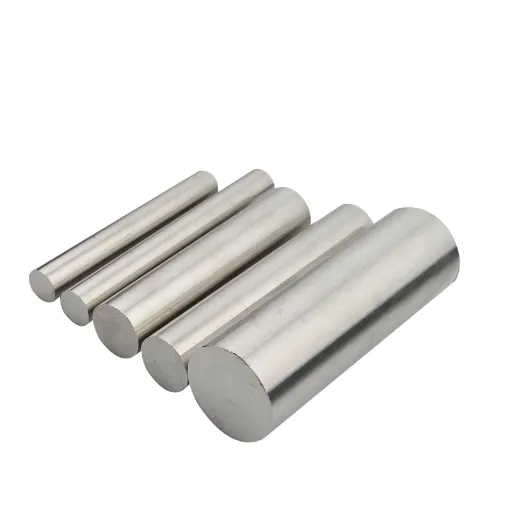Out of all the materials that are both versatile and durable, AISI 4130 alloy steel definitely takes the lead. This low-alloy steel is not only extremely strong but also tough and very resistant to fatigue, which is the reason why it is so widely used in all sorts of industries, including aerospace, automotive and many others. The question is, what is it that makes AISI 4130 so special and why is it an especially good option when it comes to steel tubing? This write-up will take you through the main characteristics and benefits of AISI 4130, allowing you to see its various applications and the reason why it is still a major material in many engineering and industrial aspects. If you are wondering about its chemical composition, mechanical properties or the part it plays in critical applications, this comprehensive guide will equip you with the necessary knowledge to comprehend the importance of AISI 4130 alloy steel.
Introduction to 4130 Alloy Steel
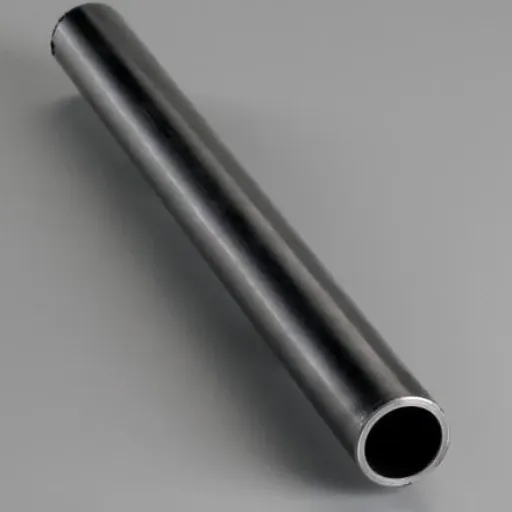
AISI 4130 alloy steel is a material of choice for applications requiring steel tubes due to its remarkable strength-to-weight ratio, weldability, and toughness. Its multifunctionality opens up to the usage in the aerospace, automotive, and oil and gas industries, among others, where it is utilized for the making of components like aircraft structures, roll cages, and pipelines regularly.
Definition of 4130 Alloy Steel
AISI 4130 is also known as “chromoly” steel in the market. The low-alloy steel consists of chromium and molybdenum as main strengthening agents. The “4130” number denotes the specific chemical composition of the steel, in which the steel has about 0.28-0.33% carbon, 0.8-1.1% chromium, 0.15-0.25% molybdenum, besides trace amounts of manganese, silicon, phosphorus, and sulfur. This alloy steel is indeed a very strong candidate for application wherever weight-to-strength ratio or extraordinary toughness and high fatigue life.
The addition of chromium increases the hardness of the material and its wear resistance, whereas molybdenum is responsible for the temperature endurance and the rise in overall strength. The combination of all these traits distinctly sets 4130 alloy steel apart making it very versatile and in fact quite suitable for applications that are demanding in terms of durability and reliability. It is mainly used in the aerospace, automotive, oil and gas, and construction sectors wherein tubing, structural components, and pressure vessels are among the main types of products manufactured.
Chemical Composition of AISI 4130
| Element | Percentage (%) |
|---|---|
| Carbon (C) | 0.28 – 0.33 |
| Chromium (Cr) | 0.8 – 1.1 |
| Molybdenum (Mo) | 0.15 – 0.25 |
| Manganese, Silicon, Phosphorus, Sulfur | Trace amounts |
The Uses of 4130 Steel in Different Industries
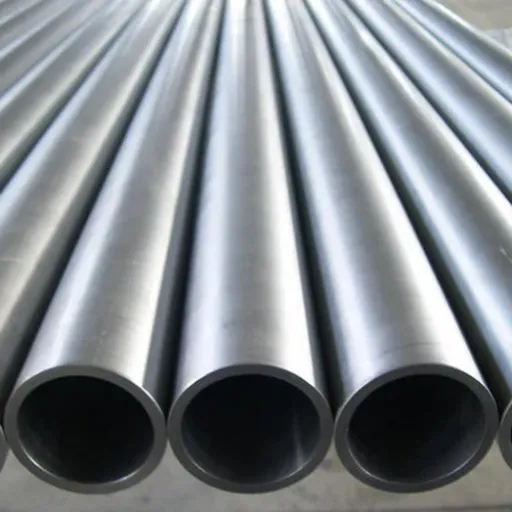
AISI 4130 steel is perfect for various industries because of its advantageous features. Apart from being tough, the aerospace sector also calls it for components like landing gear and engine mounts as a good trade-off between strength and weight. The automotive sector, on the other hand, applies it in roll cages and chassis parts where its durability is also a requirement.
Application in Aerospace and Automotive Industries
Aerospace Applications
AISI 4130 steel is majorly employed in the production of aircraft parts that are critical to the safety and successful operation of the aircraft. These parts include fuselage tubing, landing gears, and engine mounts. The steel’s high strength-to-weight ratio guarantees its application in aircraft that perform optimally without sacrificing safety or fuel consumption. Moreover, the heat treatability of AISI 4130 allows component manufacturers to obtain tensile strengths of over 100,000 psi after the alloy’s proper treatment, thus making it capable of bearing the stiff strains that are experienced during the flight operations. Also, the alloy’s excellent ease of welding means that the alloy is suitable for implementing the seamless method of joining up the various parts of the aircraft. The alloy has the ability not only to withstand fatigue but also to resist corrosion which are the two factors that make it mandatory in the area of aircraft design where the issue of reliability and longevity is put first.
Automotive Applications
To some extent, AISI 4130 steel is responsible for the large-scale application of roll cages, chassis components, and drivetrain parts in the auto industry. The virtue of the steel to combine strength and ductility is the reason why the 4130 steel is the uppermost in the manufacture of motorsport and performance vehicles. An instance One of the ways the manufacturers take advantage of this toughness is making the roll bars and tubular frames; these protect drivers in case of high-speed collisions. Meanwhile, the hardness of the steel in the annealed state can range from about 18 to 30 HRC which is a large range that gives engineers the power to cater to their specific requirements through heat treatment. Moreover, the steel being machinable facilitates the making of intricate and strong components.
Applications in Construction and Manufacturing
Construction
In the area of construction, AISI 4130 finds its application in the production of components that are extremely strong yet lightweight. Load-supporting structures, crane arms, and bridge supports are some of the common applications of AISI 4130. Besides, the extreme fatigue resistance and durability properties of the material lend it perfectly to the application in the areas of structures that have to withstand the renewal of stress and dynamic loads. Moreover, AISI 4130’s weldability is one of the most important properties that allow for strong and dependable bonds in the framework of structural assemblies. For instance, the yield strength of AISI 4130 steel is generally from 460 MPa to 760 MPa in accordance with the conditions of tempering, which guarantees the material’s reliability during the most demanding situations.
Manufacturing
AISI 4130, in the manufacturing sector, is recognized for its flexibility in the manufacturing of high-performance machinery and tools components. It is 4130 that is employed most of the time for producing gears, shafts, and fasteners, where the two most important factors are wear resistance and accuracy. AISI 4130 gets used in aerospace-grade specifications rather frequently due to its light weight but tough properties, thus it is the right choice for the production of parts like landing gear and engine mounts. What is more, this steel grade’s good compatibility with CNC machining processes makes it easy to produce parts with complicated shapes and high precision, thus reducing the time taken for production and improving the overall output.
Advantages of 4130 Alloy over Other Steel Types
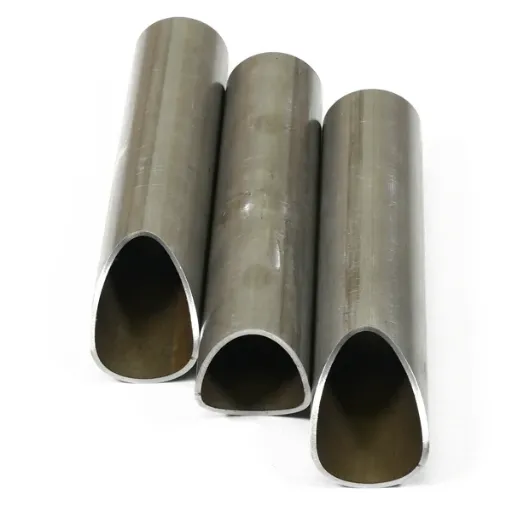
Comparison with 4140 Steel
| Property | AISI 4130 | AISI 4140 |
|---|---|---|
| Carbon Content | 0.28-0.33% | 0.38-0.43% |
| Tensile Strength (Annealed) | ~560 MPa (81,000 PSI) | 655 MPa (95,000 PSI) |
| Machinability | Better (Lower carbon content) | Good (Higher hardness retention) |
| Weldability | Excellent (Lower carbon content) | Moderate |
| Primary Applications | Tubing, aerospace components | Heavy-duty tools, industrial parts |
Chemical Composition and Hardness
The most significant difference between 4130 and 4140 steel types is the amount of carbon in them. AISI 4140 possesses more carbon (about 0.38–0.43%) than AISI 4130 (0.28–0.33%). The increase in carbon percentage in 4140 yields higher tensile strength and hardness levels after heat treatment. For instance, 4140 steel easily reaches the tensile strength of 655 MPa (95,000 PSI) in its annealed stage while 4130 has a typical strength of around 560 MPa (81,000 PSI) under identical conditions.
Machinability
AISI 4130 is more easily machined than AISI 4140 because it has a lower carbon content. This is one reason why 4130 is a favorite for tubing and aerospace components which require special and complex designs anymore. On the other hand, 4140’s tougher nature provides better strength and hardness retention during machining and this ability makes it an ideal candidate for heavy-duty tools and industrial parts.
Weldability
Comparative to 4140, AISI 4130 “weldability” is definitely enhanced because of the lower carbon content. This is the reason why 4130 is frequently used in manufacturing aircraft structures and roll cages—the welding is easier, less dangerous, and there is a minimum risk of cracking.
Benefits of Using Chromoly Steel
High Strength-to-Weight Ratio
The outstanding characteristic strength-to-weight ratio of chromoly steel is its very coming attention. It absorbs imparting tensile strength which can go beyond 560 MPa in the annealed state, thus yielding a robust performance without any essential weight addition. Therefore, such applications as aerospace, automotive, and racing industries, where strong but light materials are crucial, are precisely the ones that steal the limelight from chromoly alloy.
Durability and Impact Resistance
The steel’s durability is increased and also its resistance to impacts due to the presence of chromium and molybdenum. Chromoly steel demonstrates great performance in terms of resistance to fatigue, which makes it fit for the most demanding conditions, e.g. oil and gas pipelines under high pressure or heavy machinery components.
Corrosion Resistance
The alloy’s chromium content works to its advantage regarding a kind of ability not to rust naturally. However, it is not totally over the corrosion issue, yet Chromoly creates a barrier to degradation of the environment in comparison with plain carbon steels. Hence, this vulnerability of the products made from Chromoly extends on the condition that proper maintenance comes along with it.
Recent Innovations and Developments in 4130 Alloy Steel
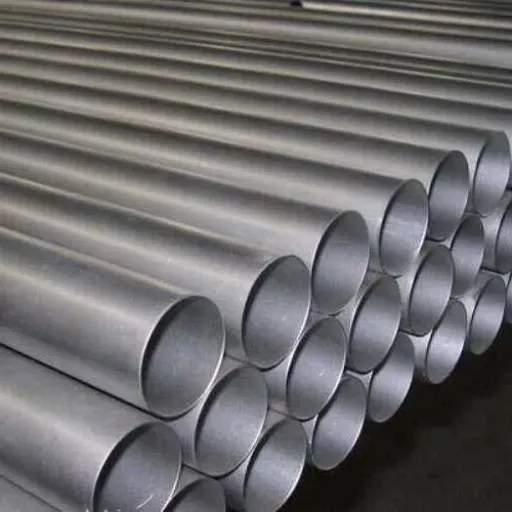
It is my conviction that the recent innovations in 4130 alloy steel mainly deal with the enhancement of its strength-to-weight ratio, the improvement of its machinability, and the application of advanced surface treatments that will further increase its durability and resistance to corrosion.
Advancements in Heat Treatment Techniques
The recent heat treatment technique innovations have made great contributions to the applications and performance of 4130 alloy steel. The heat treatment processes, like annealing, normalizing, quenching, and tempering, are now more accurate and efficient due to the synergy of technology and material science. These processes play a major role in refinings the microstructure of 4130 alloy steel and, consequently, obtaining better mechanical properties i.e. hardness, toughness, and ductility.
The utilization of computer-controlled heat treatment systems is one of the most remarkable advances. These systems allow for the accurate control of temperatures, which diminishes the likelihood of mistakes and guarantees a constant treatment throughout the material. As an example, induction heat treatment methods are gaining more and more popularity because of their fast and localized heating, which leads to low energy consumption and little distortion. It has been reported that this hardening process can raise hardness at the surface by as much as 60 Rockwell C, while still allowing the material’s core toughness to be.
Innovations in Fabrication Processes
The recent innovations in fabrication processes have greatly improved the versatility and usability of 4130 alloy steel. One of the major breakthroughs is the implementation of state-of-the-art additive manufacturing (AM) methods, such as laser-based directed energy deposition (DED) and selective laser melting (SLM). The precise and efficient formation of complex shapes with little material waste is a feature of these methods, which are very suitable for aerospace and automotive parts where low weight and high strength are essential.
Moreover, technological progress in robotic welding systems has made the welding quality and consistency in 4130 steel structures even better. Intelligent control systems that are coupled with artificial intelligence assure the best formation of the weld pool, thus preventing mistakes like porosity and cracking. An up-to-date industry research has shown that the automated welding systems have gained 25-30% more productivity compared to the traditional manual welding methods.
Practical Tips for Working with 4130 Alloy
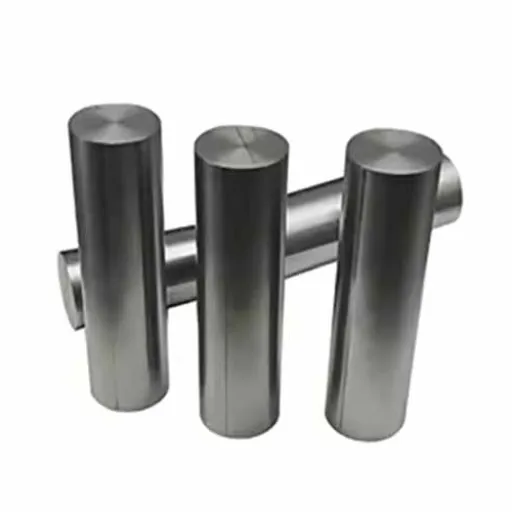
For 4130 alloy, my concentration is on the correct preheating and post-weld heat treatment to eliminate cracking and retain material integrity. Besides, I use controlled welding processes such as TIG or MIG, and when accuracy and consistency are very important, I depend on automation.
Best Practices for Machining 4130 Steel
Select the Right Tools:
For machining 4130 steel, carbide-tipped tools are the best option since they are the only ones that can bear the material’s hardness and provide a longer tool life. High-speed steel (HSS) tools are also applicable for less demanding tasks yet they might become unusable in the near future.
Optimize Cutting Speeds and Feeds:
Keep cutting speeds at moderate levels to avoid heat being built up too much. Generally, a cutting speed of 90-120 surface feet per minute (SFM) is suggested for carbide tools and HSS tools may need slower speeds. Depending on the operation and tool type, the feed rates should be moderate, about 0.002-0.005 inches per revolution (IPR).
Use Adequate Coolant:
Keep applying a consistent flow of coolant or cutting fluid to lessen the friction and disperse the heat as well as to improve the surface finish. 4130 steel usually employs soluble oil-based coolants which not only enhance lubrication but also prolong the life of the tool.
Tips for Heat Treatment of 4130 Alloy
Normalize Before Hardening
The steel is normalized at temperatures of 1600°F and 1700°F, thus making it easier to work with and it also enhances machinability. This step also makes the steel tougher.
Quenching Parameters
For quenching to be successful, 4130 alloy is first heated to 1550°F – 1600°F, then it is kept at this temperature for the right time (depending on thickness), and finally it is quickly cooled in oil. Water quenched should usually be avoided since it can lead to large stresses and cracks.
Stress Relieving
Stress relieving must be done at 1050°F to 1250°F for one hour per inch of thickness. The process removes all stresses coming from machining or welding and will therefore improve the dimensional stability.
Reference Sources
-
Arch City Steel
- Title: A Guide To 4130 Steel: Properties, Composition, And Uses
- URL: archcitysteel.com
- This source discusses the various industries that use 4130 steel, including automotive, bicycle, oil and gas, and heavy equipment manufacturing.
-
ThomasNet
- Title: All About 4130 Steel (Properties, Strength, and Uses)
- URL: thomasnet.com
- This article provides an overview of 4130 steel’s toughness, versatility, and its applications in manufacturing, welding, and high-stress industrial environments.
-
ASTM Steel
- Title: 4130 Alloy Steel: What You Need to Know About This Alloy
- URL: astmsteel.com
- This source highlights the use of 4130 steel in structural components, gears, fasteners, and aircraft parts, making it a valuable resource for understanding its feasibility in various industries.
Frequently Asked Questions (FAQs)
What the mechanical properties of 4130 alloy steel?
The mechanical properties of 4130 alloy steel consist mainly of a very high tensile strength between 90,000 to 100,000 psi and a good strength-to-weight ratio. The steel also shows very good hardness and toughness which can be further improved by applying heat treatment processes like quenching and tempering.
What the applications of 4130 tubing?
4130 tubing finds its applications in a wide variety of items such as bicycle frames, aircraft parts, and structural tubing. Its combination of strength and toughness makes it perfectly suitable for parts that demand high performance and durability in harsh environments.
Heat treatment affect 4130 steel in what way?
Heat treatment has a major impact on 4130 steel properties. Subjecting the steel to quenching and tempering results in the steel being able to provide higher levels of both strength and toughness. This is one of the reasons that 4130 steel treated with heat is particularly used in the applications where both reliability and performance are the prime factors.
Steel specifications where 4130 is mentioned as UNS G41300 has what significance?
UNS G41300 denotes the qualification number of the 4130 steel in the Unified Numbering System. Utilizing this specification ensures that both the alloy and its properties can be referred to through an internationally accepted way, thus, users will be able to use the same material across different industries and applications.
Why is 4130 labeled as a high tensile strength steel?
4130 bears the tag of high tensile strength steel because of its specific alloying elements that drastically improve the strength of the steel. The chemical composition contains chromium and molybdenum which are the main contributors to the high resistance of the steel to deformation under very high stress and strain conditions, hence the preference for 4130 in the most demanding applications.
Conclusion
AISI 4130 alloy steel stands as a testament to engineering excellence, combining exceptional strength-to-weight ratio, superior weldability, and remarkable toughness. From aerospace applications to automotive innovations, from construction marvels to precision manufacturing, this chromoly steel continues to prove its worth across diverse industries. With ongoing advancements in heat treatment techniques and fabrication processes, 4130 alloy steel remains at the forefront of material science, offering solutions for the most demanding applications. Whether you’re an engineer, manufacturer, or designer, understanding and properly utilizing AISI 4130 can unlock new possibilities in your projects, ensuring durability, reliability, and optimal performance.

